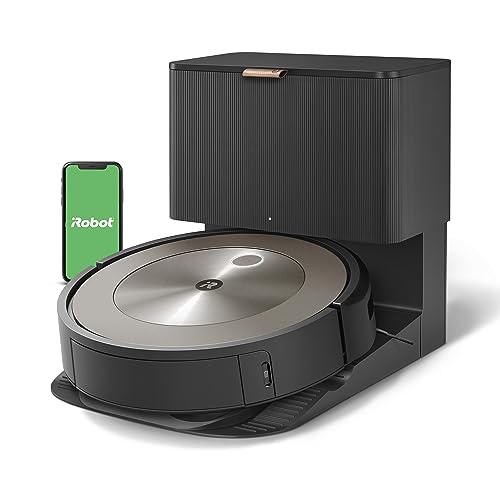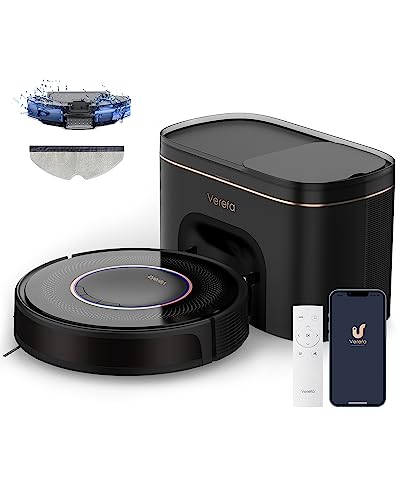10 Meetups Around Self Emptying Vaccum You Should Attend
The Convenience of a Self-Empting Vacuum
 Although the most recent robot vacuums are remarkably quiet when operating but emptying their trash bins can be an issue. This is especially true if the vacuum has a self-emptying bottom.
Although the most recent robot vacuums are remarkably quiet when operating but emptying their trash bins can be an issue. This is especially true if the vacuum has a self-emptying bottom.
They have docks that connect to the robot vacuum. It collects debris in an enormous storage bin while charging it. This means that the dustbin of the robot vacuum is no longer required to be empty every two or three cleaning sessions, but just once every 30 to 60 days.
1. Convenience
While it may seem like the height of laziness to let your vacuum empty itself but it’s actually a wonderful convenience feature. The majority of robots have tiny dustbins that need to be manually emptied after each cleaning session it can take time and limit the robot’s ability to complete the entire room’s worth of work in a single session. Self-emptying vacuums have an incline that can automatically empty the dustbin once it is full. This will save you from having to bend down and empty the tiny bin.
Some models have a larger bin, which can store up to a month’s worth debris. The process of transferring the dirt from the robot’s bin to the base is typically quite fast, which can make this an ideal option for people who live in large homes or have pets that shed lots.
Another important thing to consider when you’re considering a self-emptying robotic vacuum is that they are generally more expensive than other types of models. This is due to the fact that they come with an engine that is more sophisticated and serves a purpose other than charging your robot vacuum.
It’s not difficult to see however, it’s important to keep in mind that self-emptying bases may be quite tall. They can take up more room than other bases, which is an issue for smaller houses or those with limited storage. In addition, the design of many self-emptying robot vacuums is somewhat heavy and can be a bit of an eyesore. While it’s definitely not a problem for most but it could be an issue for those who are worried about the aesthetic of their home. The good news is, many robotic vacuums with a self-emptying base look really cool. I’ve even had guests stop me to compliment my amazing piece of technology. Some people may find that alone is enough to justify the higher cost.
2. Less Allergens
Allergens pose a significant problem for many families, especially when a member of the household suffers from allergies. Self-emptying vacuums can cut down on the amount of dust as well as pet dander and other allergens that are released into the air following vacuuming. You can be certain that all harmful particles will be sucked up into the filter and bag, instead of being released into the air. This could affect people with allergies.
If you want to make your vacuum more allergy-friendly, you should consider getting one with HEPA filtration and a wide selection of attachments that can be used to clean different surfaces. These vacuums are ideal to remove pet fur, textured crumbs and other hard-to-clean debris. This model comes with an extension cord of 25 feet that reaches from floor to ceiling.
3. Easier Maintenance
It’s a fantastic feature to have your robot empty the bin automatically and then put it in the docking station. It stops the bin from overfilling, which could cause a clog that can make your robot smell bad and stop functioning effectively. It’s also less hygienic than having to manually empty the trash and is more likely to be healthier for people with allergies, as it stops allergens from being kicked back up into the air. The Samsung Jet Bot+ has large bins that hold more debris than other self-emptying robot vacuums. This will help keep your floors clean longer. The bin comes with a built in filter that can capture pet hairs, dirt, and other small particles. This makes it easier to clean and less likely to overfill than other self-emptying robots.
4. A Shorter Time
For people that struggle with a hectic schedule self-emptying robots can be an absolute game-changer. They allow you to complete more cleaning without having to physically present and empty the trash bin after every single cleaning run. This reduces the amount of time you’re spending on chores and allows you to have more free time to relax or do other things.
Regular robot vacuums usually come with dust bins or small bins that is used to store the debris and dirt it collects after each cleaning cycle. The issue is that when you have to empty the dustbin you’re also exposed to all the icky debris that was thrown into the air and you may have to manually clean it down before using it again. The solution to this was introduced in 2018, when the first best self emptying robot vacuum Cleaner-emptying robots appeared. When a self-emptying robot vacuum and mop vaccum’s bin is full, it automatically returns to its dock and connects to the base station, where the dust and debris that has accumulated is sucked from the small bin with a loud whoosh and into a foot-high base canister, which is topped with a disposable paper vacuum bag. The vaccum then recharges its batteries and goes back on its pre-programmed cleaning route.
The canister bags are usually specified by the manufacturer to accommodate 30-60 days worth of trash. This means you’ll have to empty the vaccum’s base station approximately once or every month, depending on how much you clean and how dirty your floors become. This is a huge time-saver in comparison to emptying the dustbin after every cleaning session with robot vacuums. Additionally, you are exposed to fewer allergens often.
 Another way a self-emptying robot vacuum can save you time is by avoiding the need to change out the filter, which a majority of us have been required to do at least once or twice. It also helps prevent issues like over-stuffing or blockages, which could cause the performance of your robot to be impacted.
Another way a self-emptying robot vacuum can save you time is by avoiding the need to change out the filter, which a majority of us have been required to do at least once or twice. It also helps prevent issues like over-stuffing or blockages, which could cause the performance of your robot to be impacted.